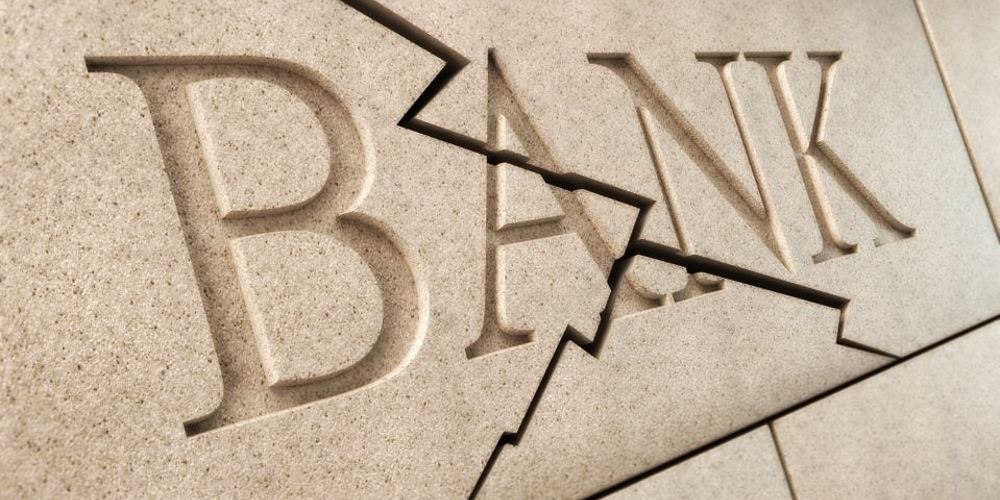At the end of July, another bank collapsed. The fall of Heartland Tri-State Bank in Kansas didn’t receive nearly the same attention as banks that collapsed earlier in the year because the government carefully managed it. They announced it on a Friday afternoon and only AFTER the FDIC had already brokered a sale and bailout.
This is extremely concerning to any American who can read the writing on the wall. There were no warning signs, no rumblings in financial sectors, and no leaks. The FDIC was able to take a bank from dying to sold without anyone in the public being aware. This tells us two important things. First, they now have contingencies in place to manage bank collapses which tells us they’re expecting more. Second, it means that anywhere we are banking may be in distress at any given moment and we will have no idea until it’s too late.
The Heartland Tri-State Bank collapse worked well. As far as we can tell, nobody was majorly harmed by it as the only inconvenience was not having access to the physical bank on Saturday morning. Checks and ATMs still worked and by the following Monday the replacement bank was put in place for business as usual.
The next collapse may not be as smooth. Or the one after that. Or the 10 at a time that could come at any moment. By no means am I trying to be a fearmonger, but as I noted earlier the proverbial writing appears to be on the wall. This is where it can get ugly.
Bail-Ins
Some Americans are familiar with the “bail-in” ploy that was put in place following the 2009 economic downturn. Instead of government stepping in with taxpayer money through a bail-out, a bail-in uses money from those who have funds in the bank. According to Investopedia:
Bail-ins provide immediate relief when banks use money from their unsecured creditors, including depositors and bondholders, to restructure their capital. Banks can convert their debt into equity to increase their capital requirements. Although depositors run the risk of losing some of their deposits, banks can only use deposits over the $250,000 protection provided by the Federal Deposit Insurance Corporation (FDIC).
That last part is comforting for those who do not have more than a quarter million dollars in the bank, but FDIC protections would be meaningless in a catastrophic scenario such as rapid hyperinflation or the reversing of the U.S. Dollar as the world reserve currency. Both scenarios, while not very likely today, are still possible and are becoming increasingly likely with every passing day of poor economic policies and a world that seems bent on taking us down.
- Gold SKYROCKETED during Trump’s first term and is poised to do it again. Find out how Genesis Precious Metals can help you secure your retirement with a proper self-directed IRA backed by physical precious metals.
For those with assets greater than $250,000 in the bank, now would be a great time to diversify. Clearly our preference is for physical precious metals. Advisor Metals can do cash purchases of bullion and ship it discreetly to your door; metals in the safe are quickly becoming a solid option over money in the bank. Genesis Gold Group specializes in converting 401Ks, IRAs, and other retirement accounts into self-directed IRAs backed by physical precious metals. Both options are being strongly considered by people across the nation.
Central Bank Digital Currency
All of the banking shenanigans support the advancement of a Central Bank Digital Currency to replace the U.S. Dollar in the near future. Implementation is the tricky part, which is why some are saying the banking collapse is being manufactured. It’s much easier to implement CBDCs after a consolidation of banks in which smaller and regional banks are mostly engulfed by the big banks that are already on board with a near-future “Digital Dollar.”
This, too, supports the notion of moving portions of wealth or retirement to physical precious metals. Money in the bank, stocks in the portfolio, or cryptocurrencies in the wallet are all threatened by the rise of a CBDC in America. Physical precious metals are not only less threatened by most economists’ reckoning, but they may actually benefit greatly from a shift to a Digital Dollar. This is why central banks themselves are buying up as much gold and silver as possible.
Physical precious metals are strong hedges no matter which direction the nation heads with CBDCs. If they’re never adopted, precious metals can be liquidated into fiat currency. If CBDCs are adopted soon, the moves by central banks and asset managers like BlackRock tell us precious metals will convert to Digital Dollars just as easily as they’d convert to paper dollars. And if things get really bad in a hurry, precious metals have an opportunity to provide true wealth protection through massive economic turmoil.
This is why we strongly encourage readers to contact Genesis Gold Group and/or Advisor Metals to secure their life’s savings with gold and silver.
The real threat in all of this isn’t the government. It’s not just the central banks. It isn’t even just the Globalist Elite Cabal. The real threat is complacent adoption of the machinations in store for us by a population that is generally unaware and uncaring. Don’t be one among the masses who fail to act because they don’t know or don’t care. Make the move to smart money today.








